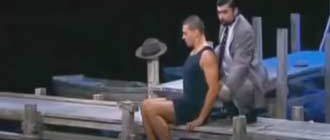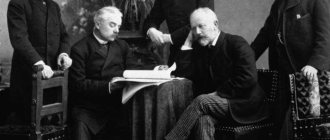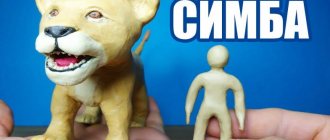Very soon the new school year will begin, kids and high school students will go to school, parents will return from vacation to work. And if it was easier to look after the children on vacation, now parents will have less time for this. Left unattended, a child can take matches and set fire to paper, plug in an electric heater, or even start a fire. Children playing pranks with fire is a common cause of fires. Therefore, in the remaining days of the summer holidays, mothers and fathers should choose a time and tell their children how to behave at home so that a fire does not happen, and what to do if a fire does occur.
Sad statistics
According to the press service of the Main Directorate of the Ministry of Emergency Situations for the Astrakhan Region, one child died in a fire in 2022, and three in 2022. Meanwhile, such tragedies can be avoided. To do this, it is necessary to constantly explain to the child the dangers of playing with fire, to keep matches or other incendiary accessories, as well as especially fire-hazardous products, objects and materials out of the reach of children. If possible, children should not be left unattended for long periods of time, but if this is not always possible, parents should take care of their safety in advance.
Fire safety rules for kids
You cannot touch matches or play with them, make fires and play near them, play and dry clothes near heating devices with an open spiral, without the permission of elders to turn on electrical appliances, a TV and a gas stove. If you see a fire, you need to immediately inform your parents or other adults.
Fire safety rules for high school students
Do not heat unfamiliar objects, packages of powders and paints, especially aerosol packages. Do not leave electrical heating devices unattended. When leaving home, you should unplug electrical appliances. It is important to remember that not only a barrel of gasoline is dangerous, but also an empty barrel of gasoline or other flammable liquid: a lit match can lead to severe burns and injuries. Do not light a stove or fire using flammable liquids - gasoline, diesel fuel. Also, you should not set fire yourself and do not allow younger ones to set fire to poplar fluff or dry grass.
What to do if a fire does occur. Memo
• if the smell of smoke appears in the apartment, find its possible source as quickly as possible; • remain calm, panic is not a help; • report the incident to an adult; • carefully check the rooms, the balcony, and look out on the landing just in case. It is better to be confident in your safety than to miss the start of a fire; • if something catches fire in the house, but you cannot extinguish it yourself, you should immediately leave the apartment. It is important to remember: toxic smoke is much more dangerous than fire. Cover your nose and mouth with a damp towel or rag. If there is a lot of smoke, it is better to move to the exit on all fours, because the smoke rises; • when leaving the apartment, close the doors tightly behind you, turning off electrical appliances and electricity if possible. Under no circumstances should you linger to pack your things! • on the site or in a safe place, urgently call the firefighters by calling 101 or 112. Tell the dispatcher the address, first and last name, location (house, entrance, floor, apartment, room), what and how it caught fire. Then clearly answer the rescuers’ questions; • be sure to warn your neighbors. Carefully go down the stairs. Don't use the elevator! This can be deadly! Then stay near the house and wait for the firefighters to arrive.
What NOT to do in case of fire
• hide under the bed, in the closet or any other place. This will make it difficult for arriving firefighters to search; • use the elevator when evacuating the building. If the house's power goes out, the elevator will get stuck; • extinguish a fire in an electrical appliance with water; • open windows, as this will only intensify the fire.
Important advice for parents
Tell your children about fire safety rules, be an example in all situations related to compliance with these rules. Let children learn about the dangers of fire from your stories, warnings, and pictures rather than from real life. Remember: you are responsible for the safety of your children!
The material was prepared jointly with the press service of the Main Directorate of the Ministry of Emergency Situations for the Astrakhan Region
Role-playing game: “Matches are not toys for children”
Role-playing game: “Matches are not toys for children”
The development was created using thirteen bright slides.
— how to properly report a fire;
— what needs to be done before the firefighters arrive;
- why you can’t open windows and doors;
— what items cannot be extinguished with water;
— how to behave in a smoky room;
- where you should not be in a burning apartment;
— what to do if a fire starts at school; evacuation plan. Presentations for the lesson
Target:
Pupils will receive knowledge of fire safety rules.
After studying the topic, students should:
a) know: the main causes and consequences of a fire; basic fire safety measures at home; rules of behavior in case of fires in the house and methods of evacuating a burning room; b) be able to: act correctly in the event of a fire in the house; evacuate from a burning building; c) have an idea: about the main damaging factors of fire affecting people.
Tasks:
1. Educational
: formation of a system of concepts about fire safety, primary fire extinguishing means, sequence of actions in case of fire;
2. Developmental
: development of oral speech;
development of skills: generalize, draw conclusions; development of communication skills: work in a team, express your point of view; formation of psychological readiness of students to act in conditions of a fire; development of cognitive interest in the topic through the practical application of knowledge in practice. 3. Educational
: fostering conscious discipline, a sense of camaraderie;
contribute to the moral education of students. cultivate a sense of self-confidence in extreme situations and responsibility for the lives of other people. ( Appendix 2.
Slide 1)
To solve the main problems, the following structure was applied:
organizational aspect, creating a favorable atmosphere of communication; communication of the topic and objectives of the lesson formulated by the students; analysis of lesson material. summing up intermediate results, general conclusion; application of acquired knowledge in practice; result of the lesson.
Lesson equipment:
a poster about the causes of a fire, drawings on fire safety, signal cards, handouts with tasks, signs with images of sad and cheerful faces, a telephone, an image of fire, sheets depicting flames.
Lesson plan:
I. Organizational moment II. Motivation
1. Theoretical part
a) Introductory speech from the teacher b) Conversation on questions
Physical education minute
2. Practical part a) Role-playing game “Fire” b) Competition “Collect a proverb” c) Game task “Finish the sentence, guess the riddle.”
III. Summary of the topic IV. Summing up the lesson.
PROGRESS OF THE CLASS
Organizing time:
- Guys, please take your seats. – Let’s first see in what mood you came to class today. On your tables there are multi-colored round leaves with images of sad and cheerful faces. Turn the sign to the side that matches your mood. Thank you.
I. Theoretical part
Educator:
Based on the topic, determine what will be discussed in our lesson, what questions will we have to answer, what concepts will we consider?
Fires lead to large material losses:
- turn residential and industrial buildings into ashes;
- destroy forests;
- destroy agricultural crops;
- People die in fires.
(Appendix 2
. Slide 3)
B) Conversation on issues:
Educator:
Let's briefly remember what you and I have learned about fire safety? – What do you think – fire is our friend or enemy? – What children’s pranks can lead to a fire?
(Fire is our friend if handled correctly, and can become our enemy if handled carelessly.
Forgetfulness when using electrical appliances, playing with matches, firecrackers.)
( Appendix 2
. Slide 4)
Q) What should you do in case of fire?
Let's remember:
1) What can cause a fire? – children playing with matches;
– improper handling of electrical appliances, electric stoves, gas stoves; - short circuit; – faulty electrical wiring, stove heating; – use of gas stoves for heating or drying clothes; – use and lighting of open fire in the apartment (construction and welding work, use of pyrotechnics; – improper storage of flammable substances, household chemicals. The causes of the fire are listed on the board.
(
Appendix 2.
Slide 5)
2) Why is fire dangerous?
Fires lead to large material losses; turn residential and industrial buildings into ashes; destroy forests; destroy agricultural crops; People die in fires.
(
Appendix 2.
Slide 6)
3) What should you do if there is a fire at school?
Stop classes and, under the guidance of the teacher, leave the school building through emergency exits in an orderly manner, without panic. Resolutely suppress panic among younger schoolchildren, do not lose composure and restraint.
(
Appendix 2.
Slide 7)
4) What should you do if there is a fire in the house?
Call “01”, call the firefighters, tell adults, if adults are not at home and the fire is small, you can try to put it out, otherwise, leave the room
Training “Call the Fireman”
Pupil:
You heard about the fire, Give a signal about it as soon as possible - Feel free to pick up the phone in your hand, be able to dial “01” And then name the City, the street and the house, And the apartment where you live, And what lock it has, And also say: “I give You give me my last name, and also the phone number where I’m standing.” Children use a telephone to “call” firefighters.
– What number should I call and how can I explain what happened? Call.
Example of the correct option: “Dial number 01. Is this a fire station?
There is a fire in our house. Address: Lenina lane , building 48 . This is Dima Ivanov speaking, telephone 21-0-77 ”
(
Appendix 2.
Slide
5) How can you put out a small fire?
Fire extinguisher, water, sand and other available means
(
Appendix 2.
Slide 9)
6) Is it possible to extinguish live electrical appliances with water?
You can't, you need to turn them off first.
7) How can you turn off the power to electrical appliances?
Unplug the cord from the socket or turn off the electricity at the switchboard in the entrance, or remove the plugs (in a private house).
(
Appendix 2.
Slide 10)
8) How many of you know how to properly overcome smoky places?
Cover your nose and mouth with a wet cloth and, staying close to the floor, moving along the wall one after another, make your way to the exit.
(
Appendix 2.
Slide 11)
9) And if you were cut off by fire in a room without a telephone on the 5th floor, what would you do?
(Close the door tightly, plug all the cracks with wet rags, go out onto the balcony or open the window and call for help.)
Physical education minute
Educator:
And now we will play a game of attention. I will ask, if you agree, answer “IT’S ME, IT’S ME, THESE ARE ALL MY FRIENDS!”, and if not, then stand up and clap your hands, our guests can also take part, and clap along with the children.
- Who, upon hearing the smell of burning, will report a fire?
- Who among you, noticing the smoke, will shout “Fire! We're on fire!"?
- Which of you plays tricks with fire, morning, evening and afternoon?
- Who, sensing gas in the apartment, will call “04”?
- Who can quietly hide matches from their little sister?
- Which one of you is playing with fire? Be honest about it!
- Who does not light fires and does not allow others to
Educator:
So, what questions have we already answered?
(Children answer)
II. Practical part
Educator:
Guys, you showed excellent knowledge of fire safety. Now we will consolidate them on practical tasks. Fire is a disaster.
To prevent it from ever coming into your home, let's review the fire prevention rules. ( Appendix 2
. Slide 1
1. Tongue twisters and proverbs
– Collect a proverb and explain its meaning. The guys receive an envelope on their desk containing words that need to be combined into a proverb or saying:
- There is no smoke without fire.
- Don't touch the matches - there's fire in them.
- Don't have the habit of carrying matches in your pocket.
- In fire, even iron is fusible.
- Straw is not friendly with fire. ( Annex 1
.
Appendix 2
. Slide 13)
3. Game “Finish the sentence”
Children are sitting at their desks. The presenter passes the ball, the participant, finishing the last word of the poetic line, passes the ball to another participant. ( Appendix 2
. Slide 14)
Lesson summary
Educator:
Children complete the phrase on small paper flames and attach them to the board around the image of a fire.
- In class I learned that a fire can occur due to...
- During the lesson I realized that in case of a fire you need...
- I remembered that there are fire extinguishing devices such as...
- What I learned from the lesson was how to take shelter in the event of a fire...
- From the lesson I realized that if there is a fire in the house, then I will call...
- I learned that when there is smoke you need...
- I realized that lighters and matches...
- The activity proved to me that candles and sparklers can...
- During the lesson I learned the main rules of behavior in... (Appendix 2
. Slide 15)
Educator:
Guys, where would you like to see this fire
(in the hearth of the fireplace
). The leader places this fire on the fireplace.
– Let the kind, warm fire of the hearth warm you with home comfort and never bring trouble!
Educator:
Never cause a fire: do not play with matches, lighters or other sources of fire; do not throw shells into the fire, do not pour kerosene, gasoline or other flammable liquids, do not leave an unextinguished fire in the forest.
Generalization - (wish from the teacher to everyone present)
So that trouble does not come to your home - Always be careful with fire! Fire is a long-time friend of man, and you can’t get by even for a day without good fire. He is a reliable friend with us, Drives away the cold, drives away the darkness, He raises a friendly flame like a flag. Everyone needs a good fire, and for that he is honored, That he warms the children's dinner, Cuts steel and bakes bread. ( Appendix 2
. Slide 16)
Educator:
On your tables there are signs with images of sad and cheerful faces. If you learned something new and useful from today’s lesson, turn the sign up with the side that shows a cheerful smile, if not, then turn it the other side up. Thank you.




